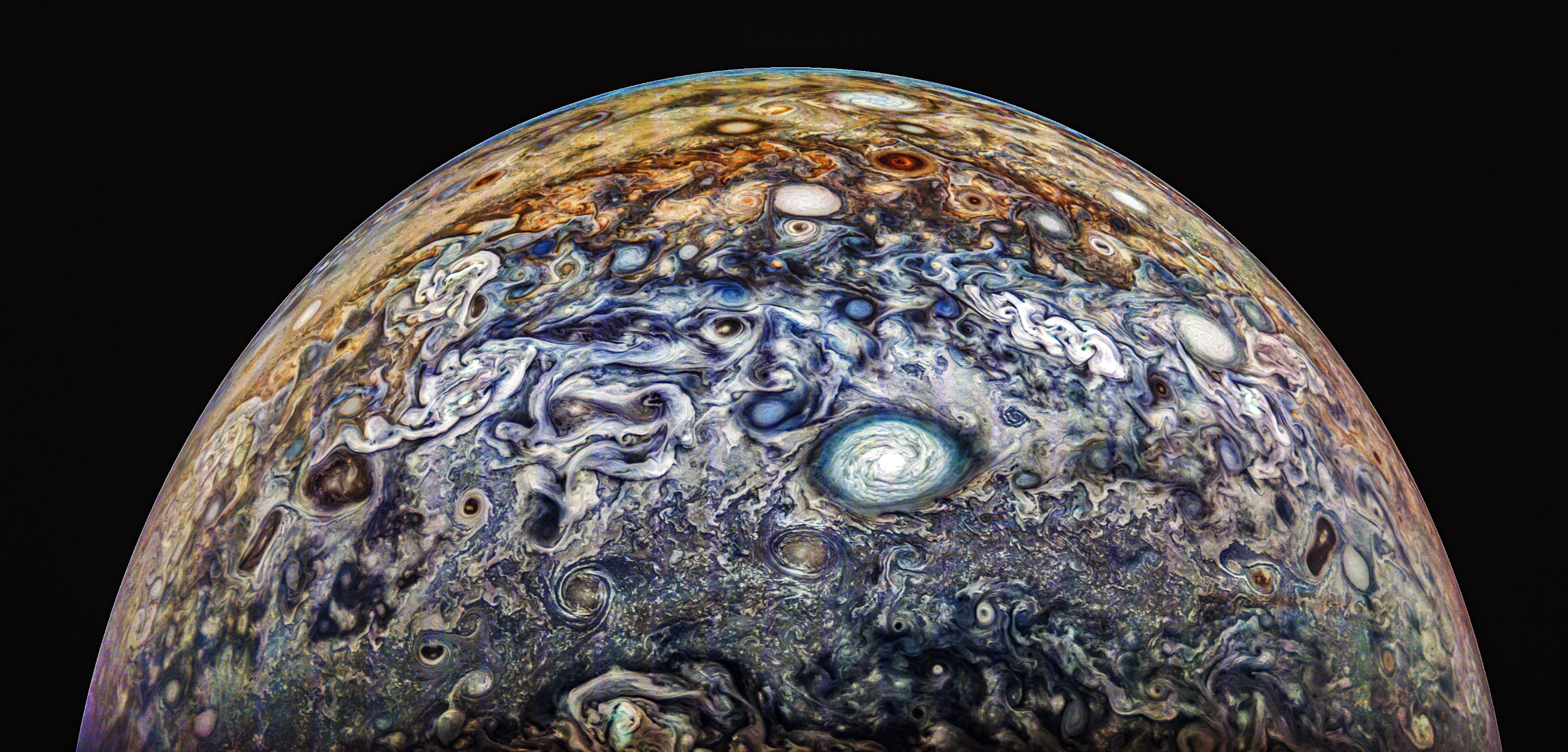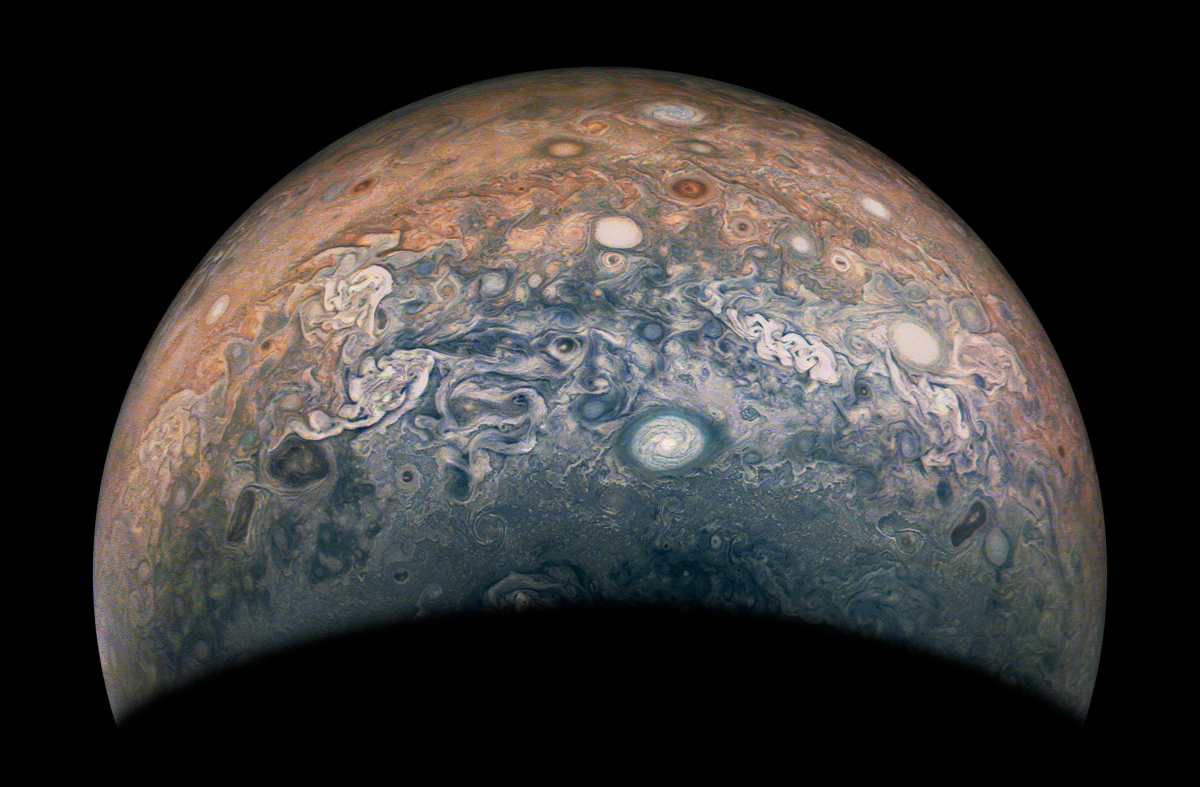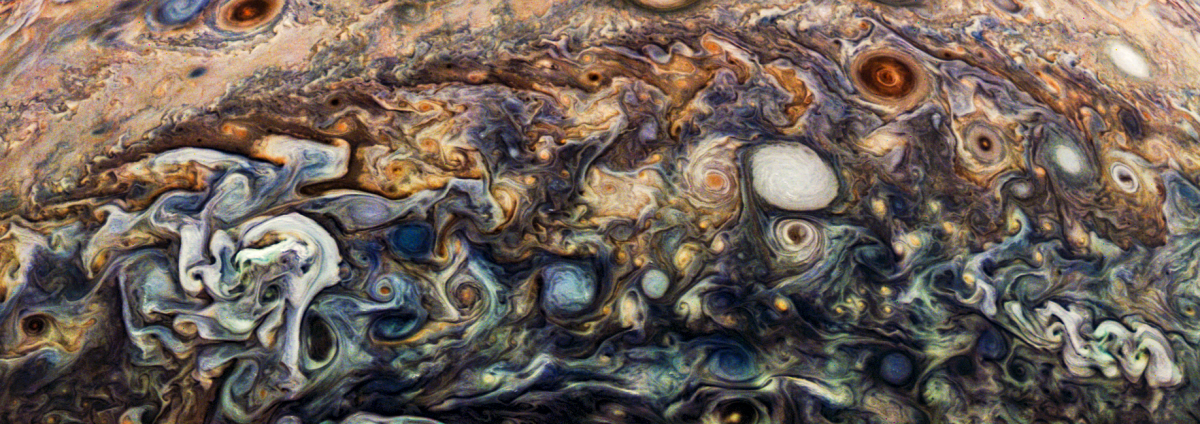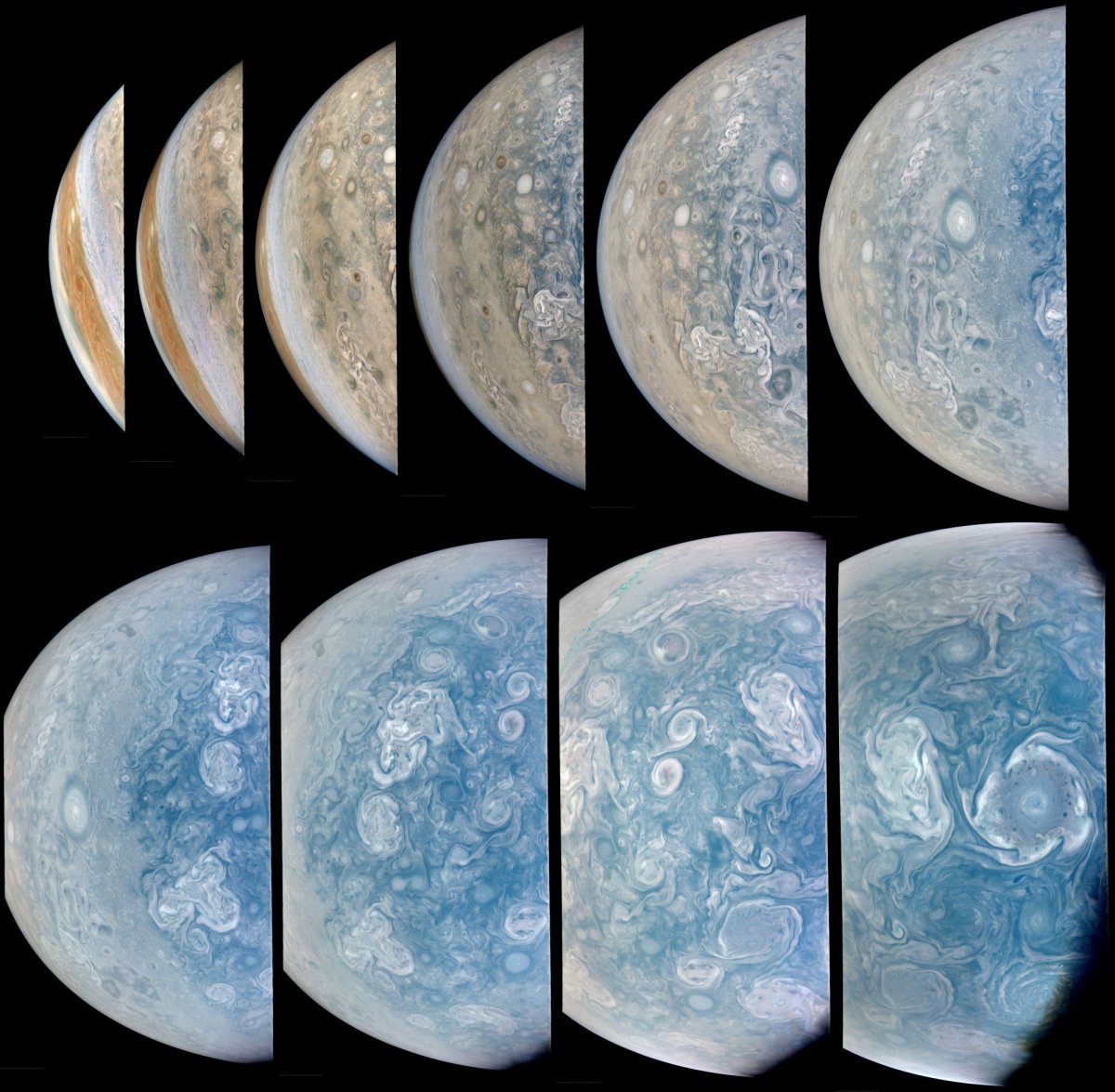
NASA’s Juno spacecraft has just completed its 66th flyby of Jupiter, and the latest batch of images it has sent back to Earth are truly spectacular.
The spacecraft was launched back in 2011, reaching Jupiter five years later in 2016 after journeying for 1.7 billion miles. Ever since then, the probe has been zipping past Jupiter and its moons, capturing images and sending back data bursting with exquisite details.
“Jupiter is the Rosetta Stone of our solar system. Juno is going there as our emissary—to interpret what Jupiter has to say,” Scott Bolton, Juno’s principal investigator, said in a statement on NASA‘s website.
On its most recent flyby, or “perijove,” completed on Oct. 23, 2024, Juno once again delivered impressive results. During this pass, the spacecraft came close to Jupiter’s fifth-largest moon, Amalthea—a rocky sphere just 52 miles wide.
NASA / JPL / SwRI / MSSS / Gerald Eichstädt / Thomas Thomopoulos © cc by
Onboard Juno is its famed camera, dubbed “JunoCam.” A two megapixel visible light camera, JunoCam is designed “to study the dynamics of Jupiter’s clouds and surface features of Jupiter’s moons, and to facilitate education and outreach,” according to NASA.
Juno has other instruments too, including a magnetometer to map Jupiter’s magnetic field and a microwave radiometer to measure the abundance of water and ammonia in the planet’s atmosphere.

NASA / SwRI / MSSS / Jackie Branc © cc by
When raw data from JunoCam is beamed back to Earth, a team of citizen scientists painstakingly processes it, yielding spectacular images.
Among Juno’s greatest hits are the first close-up images of Jupiter’s north pole. This strange, unknown region was found to have a central cyclone, surrounded by eight more, each some 2,500 miles across.
More cyclones were spotted during a flyby over the south pole of the gas giant, too.

NASA / JPL / SwRI / MSSS / Gerald Eichstädt / Thomas Thomopoulos © cc by
Juno also revealed insights into Jupiter’s most iconic storm, known as the “Great Red Spot,” which appears to be shrinking. The spot was twice the size of Earth back in 1979 but is now only 1.3 times as large as our home planet.
Plumbing the depths of the Great Red Spot, Juno showed that the storm runs some 200 miles deep—50 to 100 times the depths of Earth’s oceans.
“Every 53 days we go screaming by Jupiter, get doused by a firehose of Jovian science, and there is always something new,” Bolton said.

NASA/JPL-Caltech/SwRI/MSSS/Brian Swift
As with all good things, Juno’s mission must soon come to an end. It was originally anticipated that the mission would complete just 33 perijoves, ending in 2017. That date was then pushed back, with Juno’s mission expected to end in September 2025.
Eventually, NASA says, Jupiter’s gravity will pull Juno in, plunging the spacecraft into the gas giant’s chaotic atmosphere.
Do you have a tip on a science story that Newsweek should be covering? Do you have a question about the Juno mission? Let us know via science@newsweek.com.
